Chapter One — You Against the World
This course shows how to use the skills of a war zone reporter to excel in life and succeed in any part of the world while keeping your back safe. But, more importantly, it is designed to show students how they can communicate clearly and uniquely, both in words and silence; to collect complete information and data, to be alert and clever, wise and confident.
A primary goal is to illuminate and instruct students on how to put themselves in the other person’s shoes. It also shines the spotlight on them, to see if they really know who they are. It shows how to ask tough questions, explains why one should never just accept authority if it feels wrong. Feels wrong? How do you get those knowing feelings?
Students will learn how to get information about others and themselves. They will engage in detailed instruction and drills to understand what it takes to be a journalist: the research, the objectivity, the writing process, the ethical considerations, and the trade-offs. Instruction will include how to sharpen critical and common sense thinking and problem-solving skills; how to conduct research; how to read body language and how to understand the strengths and weaknesses of the various media.
This is AN INTENSE COURSE. Students undergo rigorous classroom drills on the tactics and art of interviews, asking questions – and obtaining ANSWERS, NOT JUST RESPONSES. They are asked to drill the instructor in rapid-fire Q-and-A. They are placed in scenarios and must talk themselves to success.
This is a WRITING course. Students have at least FOUR writing assignments, which are graded and reviewed in class, with the goal that each assignment shows marked improvement in the individual student’s awareness of writing tactics as well as their own voice. Facts and details are stressed, as is tone and the music of words.
This is a course on CLEVERNESS AND OBSERVATION AND LEARNING THE ART OF THE CURVEBALL. The course has daily ethic examples from life, balanced with humorous stories that outline craftiness, challenges and the ability to think of one’s feet. These examples crescendo into students being able to look at challenges in their lives (and each year students have come to me with just some) and find the path to confident control of the situation.
Fundamentals
This is a cross-discipline course that will include extensive instruction on the fundamentals of journalism – how to prepare for interviews, how to conduct an interview, how to use all senses to collect information, how to determine if information is good and useable, when NOT to use to information.
Ideally, the class will then progress to the next levels of journalism, in how to present and craft a report and a story, how to build sources, how to use sources, how to remain objective.
Along with these instructions will be discussions on ethics in journalism, newsroom realities and personal challenges of being a reporter.
Students will be exposed to the theoretical and practical aspects of professional writing and learn the concepts behind issues of professional writing, journalism, public affairs and other styles of writing. They will apply those concepts to a variety of professional writing projects. Students will also conduct research and be given assignments to “find information” for the next day’s class.
This is also a course about how public relations can control lives. And it is also a course of you learning how to think about yourself, who you are and where you are in the world, where you want to go now, how to protect your options in the future. The idea of “risk perception” and “situational awareness,” explaining how people subconsciously “decide” what to be afraid of and how to be afraid, how journalists often play up the frightening and threatening aspects of the news and how to work with the media more effectively.
Goals include requiring students to understand streets smarts and to learn their strengths, quietly use them and how to protect their weak spots. Other goals include helping the students learn how to write clearly, distinctly, creatively and concretely, impressing how risk communication is a matter of the actions one takes, not just what one says about them, how to COMMUNICATE clearly, to be creative regardless of pressure not to and to realize their uniqueness as a voice in larger dialogues. Part of the course requires students to create documents and strategies that could be used for actual businesses and organizations involved in real-time public relations challenges for discussion, debate and decisions in the classroom.











